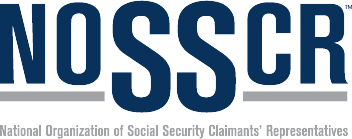The Role of Vocational Rehabilitation in Workers' Compensation
Navigating the aftermath of a workplace injury can be challenging for both employees and employers. One of the key components in helping injured workers get back on their feet is vocational rehabilitation. This program provides support, resources, and guidance to help individuals regain their independence and return to the workforce. In this blog, we'll explore the vital role vocational rehabilitation plays in the workers' compensation process and how it benefits everyone involved.
Understanding Vocational Rehabilitation
Vocational rehabilitation is a crucial aspect of the workers' compensation system, designed to support injured workers in their journey back to gainful employment. This process goes beyond simply finding a job; it focuses on helping individuals rebuild their professional lives after an injury has disrupted their ability to perform their previous work duties.
At its core, vocational rehabilitation is about assessing a worker’s unique needs and abilities, considering both the physical limitations caused by their injury and their personal career aspirations. It often begins with a comprehensive evaluation, where specialists assess the extent of the injury, the worker's existing skills, and the job market opportunities available. The goal is not just to place someone in any job but to find meaningful employment that aligns with their capabilities and interests.
This process can include a wide range of services tailored to the individual. For some, it may involve job training programs that help them acquire new skills or certifications needed to transition into a different field. Others may benefit from job placement assistance, where vocational counselors work closely with employers to identify suitable positions that accommodate the worker's limitations. In cases where returning to the previous employer is an option, workplace modifications or adjustments may be recommended to facilitate a smooth transition back into the workforce.
Vocational rehabilitation also recognizes the psychological and emotional challenges that come with a significant injury. Losing the ability to perform familiar tasks can impact self-esteem and mental health. By providing career counseling and emotional support, vocational rehabilitation aims to restore a sense of purpose and direction, helping workers to regain confidence and feel empowered in their new roles.
Ultimately, vocational rehabilitation is a collaborative effort that involves not only the injured worker but also employers, medical professionals, and vocational counselors. It’s a process that requires patience, empathy, and a deep understanding of the individual’s situation. When done effectively, it not only helps workers regain their financial independence but also fosters a smoother reintegration into the workforce, benefiting both the individual and the broader community.
The Process of Vocational Rehabilitation in Workers' Compensation
The process of vocational rehabilitation in workers' compensation is a structured and individualized approach designed to help injured workers return to suitable employment.
1. Initial Assessment
It begins with an initial assessment, where a vocational rehabilitation specialist evaluates the worker's medical condition, functional capabilities, previous work experience, and career goals. This comprehensive evaluation is crucial because it forms the foundation for developing a personalized rehabilitation plan.
2. Rehab Plan
Once the assessment is complete, the next step is crafting an individualized vocational rehabilitation plan. This plan outlines specific goals and steps tailored to the worker's unique situation. It may include recommendations for medical treatments, physical therapy, or psychological support to address any lingering effects of the injury. The plan also identifies any necessary training or educational programs that would enable the worker to acquire new skills or enhance existing ones, facilitating a smoother transition into a different job role or field if their previous position is no longer viable.
3. Implementation Phase
After establishing the plan, the implementation phase begins. During this stage, the injured worker may participate in various programs and services such as job training, resume building, interview preparation, or even internships. The goal is to equip them with the skills and confidence needed to re-enter the workforce. For some, this might involve learning a new trade or obtaining certifications in a different industry, while for others, it could mean adjusting to a modified version of their previous job with accommodations that account for their physical limitations.
4. Rehab Specialists
Throughout the process, vocational rehabilitation specialists play a pivotal role in coordinating with medical professionals, employers, and insurance representatives to ensure that the rehabilitation plan remains relevant and effective. They also act as advocates for the injured worker, helping to navigate the often complex workers' compensation system and ensuring that all necessary resources and support are provided.
5. Job Placement or Return to Work
The final stage of vocational rehabilitation involves job placement or return-to-work support. If the worker is able to return to their previous job with modifications, the specialist will work with the employer to facilitate this transition, potentially recommending ergonomic adjustments or other accommodations. If a new job is more appropriate, the focus shifts to job placement services, where the worker receives assistance in finding and securing a position that matches their skills and abilities.
Vocational rehabilitation in workers' compensation is not a one-size-fits-all process; it is dynamic and adaptable to the needs of each individual. It requires ongoing evaluation and adjustment to ensure that the worker is progressing toward their employment goals. When successful, it not only helps the injured worker regain financial stability and self-sufficiency but also fosters a sense of accomplishment and resilience, making the journey through recovery a transformative experience.
Benefits of Vocational Rehabilitation for Injured Workers
Vocational rehabilitation offers numerous benefits for injured workers, extending beyond simply returning to employment. It serves as a lifeline that helps individuals regain their independence, rebuild their professional identity, and restore their confidence after a workplace injury. The support provided through vocational rehabilitation is holistic, addressing not only the physical limitations caused by the injury but also the emotional and psychological impact that can accompany a sudden disruption to one’s career.
Financial Recovery
One of the primary benefits is the opportunity for financial recovery. After an injury, many workers face uncertainty about their ability to earn a living, especially if they can no longer perform their previous job duties. Vocational rehabilitation provides a structured path to re-enter the workforce, whether through acquiring new skills, pursuing additional education, or finding a role that accommodates their physical abilities. This not only helps alleviate financial stress but also enables workers to regain their sense of economic independence and stability.
Self-Esteem
In addition to financial recovery, vocational rehabilitation plays a significant role in boosting an individual’s self-esteem and mental health. The process of overcoming an injury and re-establishing oneself professionally can be daunting. Many workers struggle with feelings of inadequacy, anxiety, or depression as they face the possibility of being unable to return to their former positions. Vocational rehabilitation addresses these concerns by offering personalized support, career counseling, and a clear plan for the future. This guidance helps injured workers see their potential beyond their injury, allowing them to focus on their strengths and capabilities rather than their limitations.
Purpose and Direction
Furthermore, vocational rehabilitation fosters a sense of purpose and direction. It is not uncommon for individuals recovering from a work-related injury to feel lost or disconnected from their previous professional identity. Vocational rehabilitation helps them explore new career paths or adapt their existing skills to new roles, providing a renewed sense of purpose. For many, this process is transformative, leading to personal growth and a deeper understanding of their own resilience and adaptability.
Community Engagement
The benefits of vocational rehabilitation also extend to the social aspect of work life. Returning to employment, even in a different capacity, helps workers re-engage with their communities and professional networks. This social reintegration is crucial for overall well-being, as it combats the isolation that can sometimes accompany long periods of recovery. By helping workers re-establish their place in the workforce, vocational rehabilitation contributes to a more comprehensive recovery that encompasses social, emotional, and psychological health.
Ultimately, vocational rehabilitation empowers injured workers to take control of their futures. It provides the tools, resources, and support necessary to navigate the challenges of returning to work, whether that means resuming their previous roles, finding new employment, or even exploring entrepreneurial opportunities. Through this process, injured workers are not only able to reclaim their livelihoods but also their sense of self, paving the way for a more fulfilling and balanced life after injury.
Common Challenges in Vocational Rehabilitation
Vocational rehabilitation can be a transformative process for injured workers, but it is not without its challenges. These hurdles can complicate the journey back to meaningful employment and, if not addressed properly, may hinder the effectiveness of the rehabilitation process. Understanding these challenges is essential for developing strategies to overcome them and ensuring that vocational rehabilitation fulfills its potential in supporting injured workers.
Resistance to Change
One of the most significant challenges is the resistance to change, both from the injured worker and, at times, the employer. For workers, adjusting to the idea that they may not be able to return to their previous job roles can be emotionally difficult. This sense of loss and the fear of the unknown can lead to a lack of motivation or engagement in the rehabilitation process. Some workers may feel overwhelmed by the prospect of learning new skills or pursuing a different career path, which can result in reluctance to participate fully in vocational training or counseling.
Employer Reservation
Employers, on the other hand, may face their own set of reservations. They might be hesitant to accommodate modified duties or offer re-employment to a worker with limitations, fearing potential liability or disruption to their operations. This lack of cooperation can create an additional barrier to successful reintegration, as the support of the employer is often crucial for a smooth transition back to work.
Physical Limitations
Another common challenge is the physical and psychological limitations that injured workers may face. For some, the nature of their injuries may restrict the types of jobs they can perform, making it difficult to find suitable employment opportunities. Chronic pain, reduced mobility, or other lasting effects of the injury can limit the worker’s capacity to engage in certain types of work, requiring more extensive vocational retraining and potentially prolonging the rehabilitation process.
Psychological Factors
Psychological factors such as anxiety, depression, or post-traumatic stress disorder (PTSD) can also play a significant role in complicating vocational rehabilitation. These conditions can affect a worker’s ability to focus, engage with the rehabilitation process, and maintain a positive outlook on their future employment prospects. Without adequate psychological support, these mental health challenges can become a significant barrier to successful rehabilitation.
System Complexity
The complexity of navigating the workers' compensation system itself can be another obstacle. The process often involves multiple stakeholders, including insurance companies, medical professionals, and vocational rehabilitation counselors, each with their own requirements and procedures. This complexity can be confusing and overwhelming for injured workers, particularly those who are already coping with the stress of their recovery. Miscommunication or lack of coordination among these parties can delay the rehabilitation process or lead to misunderstandings about the worker’s needs and entitlements.
Realistic Job Opportunities
Moreover, there is the challenge of aligning the worker’s aspirations with realistic job opportunities. Injured workers may have specific preferences or aspirations regarding their future employment that do not align with the current job market or their physical abilities. Finding a balance between the worker’s desires and the practicalities of their situation requires careful planning, open communication, and sometimes, difficult compromises.
External Factors
Finally, there are external factors such as economic conditions and job market fluctuations that can impact the success of vocational rehabilitation. In regions with limited job opportunities or in industries facing economic downturns, finding suitable employment for injured workers can be even more challenging. These external conditions are beyond the control of the rehabilitation process but must be considered when setting realistic goals and expectations.
Addressing these challenges requires a comprehensive, flexible approach that involves all stakeholders—workers, employers, rehabilitation professionals, and insurers—working together to create a supportive environment. Early intervention, clear communication, and individualized support are key to overcoming these obstacles and ensuring that vocational rehabilitation leads to successful outcomes for injured workers.
How to Access Vocational Rehabilitation Services
Accessing vocational rehabilitation services can be a crucial step for injured workers looking to regain employment and restore their financial stability after a workplace injury. Understanding the process of how to access these services is essential for ensuring that injured workers receive the support they need to make a successful return to the workforce. Here’s a look at how to navigate the path to vocational rehabilitation.
The first step in accessing vocational rehabilitation services is to notify your employer and the workers’ compensation insurance carrier about your injury as soon as possible. This initial report triggers the workers’ compensation process and opens the door to various benefits, including medical treatment and potential vocational rehabilitation services. It’s important to provide accurate and detailed information about the injury and its impact on your ability to work.
Once the injury has been reported and documented, the next step is to consult with your treating physician. The doctor’s assessment plays a pivotal role in determining your eligibility for vocational rehabilitation services. If your physician concludes that you are unable to return to your previous job due to your injury, they may recommend vocational rehabilitation as part of your treatment plan. This recommendation serves as the basis for further discussions with your workers’ compensation insurance adjuster and vocational rehabilitation specialists.
Following the physician’s recommendation, your workers’ compensation insurance carrier may initiate a referral to a vocational rehabilitation counselor. This counselor will typically conduct a comprehensive assessment to understand your medical condition, previous work history, skills, education, and personal interests. The goal of this assessment is to identify the types of vocational services that would be most beneficial for you, whether it be job placement assistance, retraining, or educational programs to help you transition into a new role.
If you are interested in vocational rehabilitation services and believe they would be beneficial, but have not yet been referred, you can proactively request them. It’s your right to ask for these services if you feel that returning to your previous job is not possible due to your injury. You can make this request directly to your workers’ compensation insurance adjuster, your employer, or your treating physician. They are responsible for considering your request and facilitating the necessary steps to provide you with access to vocational rehabilitation.
It’s important to note that the availability of vocational rehabilitation services may vary by state, as different states have their own regulations and guidelines governing workers’ compensation and vocational rehabilitation. Some states may require the involvement of a vocational rehabilitation counselor at a certain point in the claim process, while others may offer services on a more discretionary basis. Understanding the specific rules and requirements in your state can help you navigate the process more effectively.
Once you are connected with a vocational rehabilitation counselor, they will work with you to develop an individualized vocational rehabilitation plan. This plan will outline the specific services you will receive, the timeline for those services, and the goals you aim to achieve through the program. It’s important to actively participate in the development of this plan and to communicate openly with your counselor about your needs, preferences, and any concerns you may have.
Throughout the process, maintaining open communication with your vocational rehabilitation counselor, workers’ compensation adjuster, and treating physician is key. They are there to support you, and keeping them informed about your progress, any challenges you encounter, and your evolving career goals will help ensure that the vocational rehabilitation services you receive are tailored to your needs.
Accessing vocational rehabilitation services requires a combination of timely reporting, medical evaluation, proactive communication, and understanding of your rights within the workers’ compensation system. By taking these steps, injured workers can receive the support they need to rebuild their careers and move forward with confidence.
Conclusion
Vocational rehabilitation plays a vital role in helping injured workers regain their independence and return to meaningful employment. By understanding the process of accessing these services and actively participating in their own recovery, workers can take significant steps toward rebuilding their professional lives. With the right support and resources, vocational rehabilitation can be a transformative journey, turning setbacks into new opportunities for growth and success.
Cole, Fisher, Cole, O’Keefe + Mahoney is Central California’s leading workers’ compensation and social security disability law firm. With over 30 years of successful experience, we are committed to securing maximum benefits for our clients in the Fresno, California area. Schedule a free consultation today.
© 2025 Cole, Fisher, Cole, O’Keefe + Mahoney
Making a false or fraudulent workers’ compensation claim is a felony subject to up to five years in prison, or a fine of up to $150,000 or double the value of the fraud, whichever is greater, or by both imprisonment and fine.







